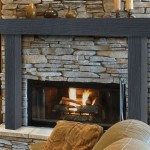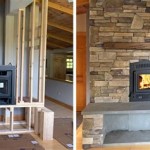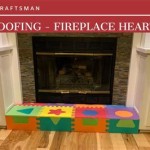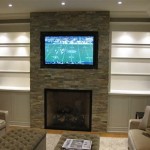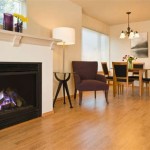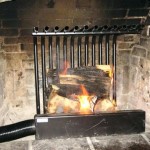Enhancing Your Hearth: A Guide to Vintage Fireplace Accessories
Fireplaces have long served as focal points in homes, providing warmth, ambiance, and a gathering place for families. Beyond the functional aspect of heating, fireplaces also represent a significant design element, capable of reflecting the homeowner's personal style and historical appreciation. Vintage fireplace accessories, in particular, offer a tangible connection to the past, allowing homeowners to infuse their living spaces with character and unique charm. This article explores the world of vintage fireplace accessories, examining their history, types, and considerations for acquisition and maintenance.
The appeal of vintage fireplace accessories lies in their craftsmanship and the stories they hold. Unlike mass-produced modern alternatives, vintage pieces often showcase intricate details, durable construction, and designs that reflect specific historical periods. These accessories not only enhance the aesthetic appeal of a fireplace but also provide functional benefits, such as improved fire management and safety.
Understanding the History and Evolution of Fireplace Accessories
The use of fireplaces for heating and cooking dates back centuries. Early fireplaces were simple open hearths, gradually evolving into more sophisticated structures with chimneys for efficient smoke removal. As fireplaces became more refined, so too did the accessories designed to complement and enhance their functionality.
In the Colonial era, fireplace accessories were often handmade from materials readily available in the region. Wrought iron was a common material, used to create sturdy tools such as pokers, tongs, and shovels. These tools were designed for practicality, but artisans also incorporated decorative elements, adding flourishes and personalized touches.
The Victorian era witnessed a surge in ornate and elaborate fireplace accessories. Cast iron became increasingly popular, allowing for intricate designs and mass production. Fire screens, andirons, and fenders were decorated with elaborate motifs, reflecting the Victorian penchant for opulence and detail. Brass and bronze were also frequently used, adding a touch of elegance and sophistication.
The early 20th century brought about stylistic shifts, with the Arts and Crafts movement emphasizing handcrafted simplicity and natural materials. Fireplace accessories from this period often featured clean lines, geometric patterns, and the use of copper, brass, and wrought iron.
Mid-century modern fireplaces often incorporated sleek designs and minimalist aesthetics. Fireplace accessories from this era reflected this sensibility, with streamlined forms and industrial materials such as chrome and steel.
Exploring Different Types of Vintage Fireplace Accessories
The range of vintage fireplace accessories is extensive, encompassing a variety of tools and decorative elements designed to enhance both the functionality and aesthetic appeal of the hearth. Understanding the different types of accessories available is essential for making informed choices when acquiring vintage pieces.
Fireplace Tools:
These are essential for managing the fire safely and efficiently. Common fireplace tools include: *Pokers:
Used to stir and adjust the logs to improve airflow and combustion. *Tongs:
Designed for picking up and repositioning logs. *Shovels:
Used to remove ashes from the fireplace. *Brooms:
For sweeping up loose ash and embers around the hearth. *Tool Sets:
Complete sets containing a poker, tongs, shovel, and broom, often displayed on a stand. Vintage tool sets can range from simple and functional to highly decorative, featuring ornate handles and elaborate stands.Andirons:
These are metal supports placed inside the fireplace to elevate the logs, allowing for better airflow and more efficient burning. Andirons come in a variety of styles, from simple wrought iron designs to elaborate cast iron pieces featuring decorative motifs such as animals, mythological figures, or geometric patterns. The height and design of andirons can significantly impact the appearance and functionality of the fireplace.Fire Screens:
Used to prevent sparks and embers from escaping the fireplace, protecting the surrounding area from fire hazards. Fire screens can be made from a variety of materials, including wrought iron, brass, and mesh. Vintage fire screens often feature intricate designs and decorative elements, adding a touch of elegance to the hearth.Fenders:
Low barriers placed in front of the fireplace to prevent embers from rolling out and to protect the hearth area. Fenders can be made from brass, iron, or steel, and often feature decorative details such as scrollwork, embossing, or geometric patterns. They contribute to the overall safety and aesthetic appeal of the fireplace.Hearth Rugs:
Placed in front of the fireplace to protect the flooring from sparks and embers. Hearth rugs are typically made from fire-resistant materials such as wool or asbestos. Vintage hearth rugs can feature a variety of designs, from simple geometric patterns to elaborate floral motifs.Fireplace Inserts/Surrounds:
These are decorative frames or panels that surround the fireplace opening, adding a touch of elegance and enhancing the overall aesthetic. Vintage fireplace inserts can be made from wood, marble, or metal, and often feature intricate carvings or moldings. Some inserts included cast iron panels with decorative patterns.Bellows:
An antique tool that was essential for fire control. Bellows allowed people to manually pump fresh air into the flames, stoking them when they were starting to die down. These were often made of wood and leather and decorated with elaborate carvings or painted scenes.Considerations for Acquiring and Maintaining Vintage Fireplace Accessories
Acquiring vintage fireplace accessories requires careful consideration of several factors, including condition, authenticity, and compatibility with the existing fireplace. Proper maintenance is also essential to preserve the beauty and functionality of these historical pieces.
Assessing Condition and Authenticity:
When acquiring vintage fireplace accessories, it is crucial to carefully assess their condition. Look for signs of wear and tear, such as rust, dents, or cracks. Minor imperfections are to be expected in vintage items, but significant damage can affect their functionality and value. Authenticity is also an important consideration. Research the specific styles and materials associated with different historical periods to help determine if a piece is genuine.Cleaning and Restoration:
Cleaning and restoring vintage fireplace accessories can help to revive their original beauty. Use gentle cleaning methods to avoid damaging delicate finishes or materials. For metal accessories, consider using specialized metal cleaners designed for brass, iron, or copper. Avoid harsh chemicals or abrasive cleaners, which can scratch or corrode the surface. Rust can be removed with specialized rust removal products or through professional restoration services.Compatibility with Existing Fireplace:
Before acquiring vintage fireplace accessories, ensure that they are compatible with the size and style of your existing fireplace. Consider the dimensions of the fireplace opening, the height of the firebox, and the overall aesthetic of the room. Overly large or ornate accessories may overwhelm a small fireplace, while small or understated accessories may be lost in a grander setting.Safety Considerations:
When selecting and using vintage fireplace accessories, safety should be a primary concern. Ensure that all accessories are in good working condition and free from defects that could pose a fire hazard. Use fire screens to prevent sparks and embers from escaping the fireplace, and keep flammable materials away from the hearth. Regularly inspect and clean the chimney to ensure proper ventilation and prevent the buildup of creosote, a flammable substance that can cause chimney fires.Display and Arrangement:
The way you display and arrange vintage fireplace accessories can significantly impact the overall aesthetic of your hearth. Consider the balance and symmetry of the arrangement, and choose accessories that complement each other in terms of style and material. Arrange the tools in a logical and functional manner, keeping the poker and tongs within easy reach. Use andirons to elevate the logs and create a visually appealing fire. A well-arranged fireplace can serve as a focal point in the room, adding warmth, character, and a touch of historical charm.Vintage fireplace accessories offer a unique opportunity to enhance the beauty and functionality of your hearth, while also celebrating the craftsmanship and design of bygone eras. By carefully considering the history, types, and considerations for acquisition and maintenance, homeowners can acquire and preserve these historical pieces for generations to come.

Vintage Fireplace Accessories In Brass 1960s Set Of 8 For At Pamono

Cleaning Restoring Antique Fireplace Accessories

Brass Antique Fireplaces Mantels Fireplace Accessories For

Vintage Brass Andirons Small 15 Fireplace Accessories Ecobuilding Bargains

Fireplace Accessories Nicholas Gifford Mead

Vintage Fireplace Accessories With Andirons Or Fire Dogs

Vintage Fireplace Accessories With Andirons Or Fire Dogs

Old Brass Iron Fireplace Tools English Country Home

Pair Vintage Brass Andirons Solid Fireplace Accessories House

Antique Reion Fireplaces Mantels Fireplace Accessories
Related Posts

